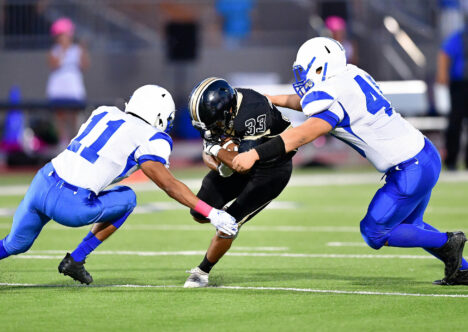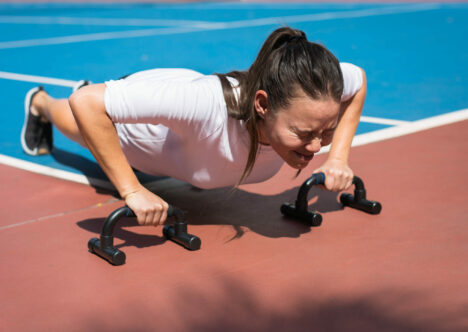Use our convenient online scheduler to book an appointment now.
Reverse shoulder replacement is an innovative surgical procedure that offers pain relief and increased mobility for patients with severe shoulder arthritis or a rotator cuff tear that hasn’t healed after conservative treatments. It’s typically used when other traditional, less invasive treatment methods have failed to improve the patient’s condition. If reverse shoulder replacement has been recommended for you, Town Center Orthopaedics orthopedic surgeon and sports medicine specialist Dr. Ryan G. Miyamoto answers your top eight questions in this article and video.
What To Know About Reverse Shoulder Replacement Surgery
What Is Reverse Total Shoulder Replacement Surgery?
Reverse shoulder replacement is a relatively new procedure that helps people with shoulder injuries and arthritis. The surgery involves replacing the normal ball-and-socket joint of the shoulder with a prosthesis. This new prosthesis changes how the arm works, allowing improved mobility and pain relief.
What Is Different About a Reverse Shoulder Replacement and Traditional Shoulder Replacement Surgery?
Like traditional total shoulder replacement surgery, reverse shoulder replacement surgery replaces the ball-and-socket joint with a new prosthesis. However, a reverse shoulder replacement flips the orientation of the joint by placing a plastic cup on the humerus (arm) side of the joint, and a metal ball on the socket (glenoid) side of the joint.
Why Might I Need Reverse Shoulder Replacement Surgery?
You may need the surgery if an X-ray or advanced imaging study shows evidence of arthritis and rotator cuff damage or if you have a bad fracture of the humerus or the shoulder that doesn’t seem to be healing.
Which Is Better: Total Shoulder Replacement or Reverse Shoulder Replacement?
It’s not that one is better than the other. The surgeries are recommended for different situations. Total shoulder replacement is indicated when someone has evidence of osteoarthritis in the glenohumeral joint with an intact rotator cuff and good bone stock. A reverse shoulder replacement is used when someone has bad bone-on-bone arthritis, the rotator cuff is deficient or torn, or there’s insufficient bone to safely and securely mount a regular shoulder replacement.
How Long of a Hospital Stay Is Needed after Reverse Shoulder Replacement?
If there are no issues, the procedure takes about an hour and 15 minutes, and 85% to 90% of patients go home the same day of the surgery.
How Long Does It Take To Fully Recover from Reverse Shoulder Replacement?
Formal therapy afterward typically lasts for about three months. Recovery can last up to nine months, although many people notice a marked improvement in pain relief and function at the six-week mark.
What Are the Limitations After Reverse Shoulder Replacement?
With the stronger, more stable implants we use today for reverse shoulder replacement, there are almost no limitations after surgery. The biggest ones we caution patients about are heavy, quick, violent overhead motions, such as lifting heavy weights in a singular violent motion. But otherwise, we let our patients work out, play golf, and even go skiing. Day-to-day functions around the house have almost no limitations.
How Long Does a Reverse Shoulder Replacement Last?
Because it is a relatively new procedure here, data is still being gathered about the implant’s longevity, but we expect it to last 10 to 15 years, as we’ve seen in Europe.
Talk to Virginia’s Leading Orthopedics Provider About Reverse Shoulder Replacement
If you have questions about your shoulder pain, there’s no need to suffer. Talk to our orthopedic shoulder specialists at Town Center Orthopaedics and find out if reverse shoulder replacement surgery is the answer for your situation. Make an appointment at one of our convenient locations in Ashburn, Centreville, Fairfax, and Reston by calling us at any time at (571) 250-5660 or requesting an appointment online.
We look forward to answering your questions and helping you regain your quality of life soon.
Join our Mailing List
TCO provides patients with orthopedic problems the trusted resources and patient-centered advice they need to “Feel Better. Move Better. Be Better.”
© 2024 Town Center Orthopaedics | All Rights Reserved


